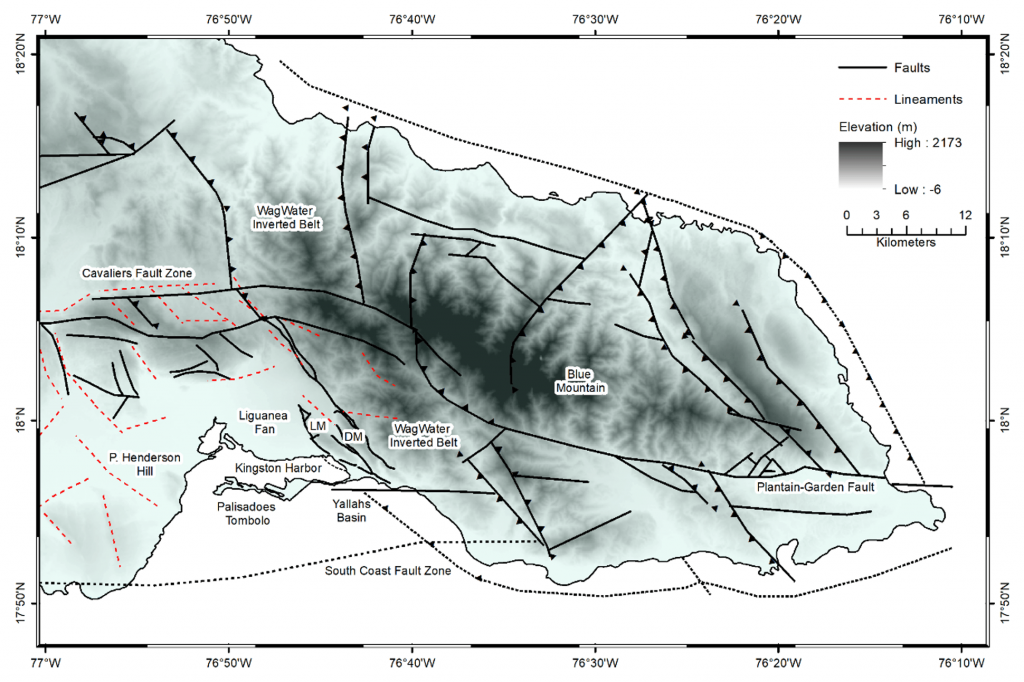Paleoseismicity and Neotectonics Research
Neotectonics of Southeast Jamaica Derived from Marine Seismic Surveys and Gravity Cores
Southeast Jamaica hosts a restraining bend flower structure that developed due to structural interactions between the Enriquillo-Plantain Garden Fault and pre-existing rift-basins (Figure 1). Constraining onshore paleoseismicity is difficult because of erosion, rugged terrain, sedimentation, vegetative growth, human development and, limited seismic and geodetic data. This study constrains Quaternary paleoseismicity by examining the tectonic records within a shallow marine environment bordering Southeast Jamaica (i.e. Kingston Harbor) and addressing the structural relationship between onshore and offshore faults.

Figure 1. Topographic map of Eastern Jamaica showing the locations of mapped faults and major tectonic structures that create the restraining bend flower structure. Abbreviations – LM (Long Mountain), DM (Dallas Mountain)
Our analyses suggests that Southern Jamaica contains an active offshore strike-slip fault system that likely accommodates strain from on-land faults associated with EPGF. We estimate that the fault system accommodates up to a third of the slip from the EPGF – up to 2 mm faster than previously thought. The newly discovered submarine fault system can generate large (Mw 4.8 -6.9) earthquakes.